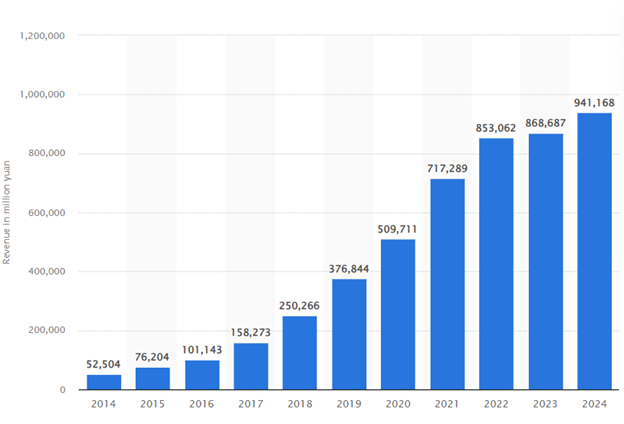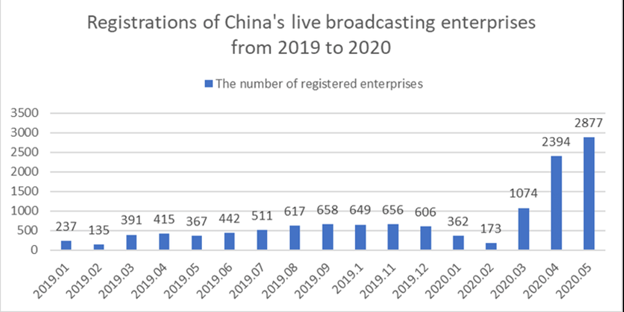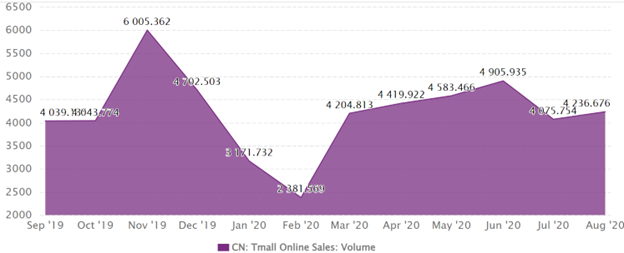“Never give up. Today is hard, tomorrow will be worse, but the day after tomorrow will be sunshine.” Jack Ma’s words sum up the spirit and perseverance that founded Alibaba.
As a global e-commerce giant, Alibaba Group has changed the way businesses work and consumers shop, it’s the foundation of the digital economy.
Alibaba’s innovation has disrupted the e-commerce landscape. By using technology to empower small and medium enterprises (SMEs), Alibaba has created a platform that connects global buyers and sellers worldwide.
Its customer-centric approach, technology, and ecosystem have set a new benchmark in the industry and achieved unprecedented growth and transformation.
This article will dive into Alibaba’s enterprise structure, customer service strategies, chatbot technology, and management practices.
1. Alibaba’s Origins
In 1999, Jack Ma, a former English teacher from Hangzhou, China, founded Alibaba with the dream of using the Internet to let small businesses compete globally. Alibaba’s original mission was simple and audacious: to make it easy to do business anywhere.
The e-commerce company wanted to build a platform that connects small and medium enterprises (SMEs) in China with international buyers, to democratize access to the market and level the playing field.
Alibaba’s origin story is a classic tale of innovation and perseverance. Inspired by his belief in the internet, Jack Ma gathered 17 friends in his apartment to start the company with an initial investment of $60,000. Source.
One of the most important milestones in Alibaba’s business history was its initial public offering (IPO) on the New York Stock Exchange in September 2014. The IPO raised $25 billion, the largest in history at that time. Source.
By 2021, Alibaba Cloud was the leading cloud service provider in China, Ant Financial’s Alipay had over 1 billion users worldwide. Source.
2. Alibaba’s E-commerce Ecosystem

Annual Revenue Of Alibaba from 2014-2024
Alibaba’s e-commerce ecosystem is a big and complex network that goes beyond online retail, it’s a wide range of other businesses too.
Taobao: The Marketplace for All

Active users of Taobao Live APP Data
In 2003, during the internet boom era, Alibaba launched Taobao. A consumer-to-consumer (C2C) platform, Taobao became a bustling marketplace where ordinary people can sell anything.
Today, Taobao has over 800 million products, one of the largest e-commerce platforms in the world. Source.
Jack Ma once said about Taobao, “The most important thing is to make the customer happy.” Source.
Tmall: Where Brands Meet Consumers

Tmall Online Sales In 2020
Alibaba launched Tmall in 2008, an online retail business-to-consumer (B2C) platform that offers products from international retailers and domestic brands. Tmall group has over 180,000 brands, including global giants like Apple, Nike, and Unilever by having strict quality control and premium customer service. Source.
As of 2022, Tmall accounted for over 50% of Alibaba’s e-commerce revenue with 22.2 billion US dollars in net sales, it’s a big part of the ecosystem. Source.
Daniel Zhang, CEO of Alibaba, said about Tmall: “Tmall is not just an e-commerce platform; it’s a way for brands to connect with their consumers deeply.”
Alibaba Cloud: The Digital Economy

Alibaba Cloud Annual Revenue Worldwide 2023
In 2009, Alibaba’s business entered cloud computing with the launch of Alibaba Cloud (Aliyun). Today, Alibaba Cloud is the largest cloud service provider in Asia and third in the world, behind Amazon Web Services (AWS) and Microsoft Azure.
Alibaba Cloud had 50% year-on-year revenue growth in 2022, 3,870 million US dollars. Source. This business unit success is due to its comprehensive services including data storage, processing, and AI solutions.
Difference from Self-Operated E-commerce Platforms: Walmart
Alibaba’s e-commerce model is different from self-operated platforms like Walmart, it’s a unique approach that enables its fast growth and wide reach.
● Marketplace Model vs. Retailer Model
Walmart buys products from suppliers, stores them in warehouses, and sells them to consumers directly. The retailer model has high costs for inventory management, warehousing, and logistics.
Alibaba doesn’t own the inventory on its platforms, it facilitates transactions between buyers and third-party sellers. This model reduces financial risk and overhead costs.
By 2023, Taobao had over 1 billion product listings, far more than self-operated platforms like Walmart. Source Alibaba Annual Report 2023.
● Product Variety and Range
Walmart’s product range is limited, it only operates in regions where it has a physical and logistical presence, limiting its global reach.
Alibaba’s marketplace model supports millions of products from global sellers. Alibaba’s platforms are global, so international sellers can reach Chinese consumers and vice versa.
● Third-Party Sellers in Alibaba’s Ecosystem
Forbes in 2023 said Alibaba’s support to third-party sellers through technology and logistics is the key to its continuous growth and market leadership. Source.
As of 2023, Alibaba’s retail marketplaces in China, Taobao, and Tmall, had over 124 million active sellers. Source. Alibaba provides its third-party sellers with advanced technology and tools to run their business.
In 2024, Alibaba’s revenue grew by 3% which is a 30% increase in SME adoption. Source.
As of the 2023 report, Taobao had a 6.5% daily active users growth yearly. Source.
To support its third-party sellers, Alibaba has financial services through its affiliate Ant Financial. These services include microloans, payment solutions, and financial management tools.
3. Alibaba’s Customer Service Philosophy: Unique Features of Alibaba’s Customer Service System
Alibaba’s “customer first” philosophy is evident in everything it does. This principle puts the customer above all, everything else is business decision and strategy.
As Jack Ma says, “Success and profitability are outcomes of focusing on customers and employees, not objectives.”
This quote sums up Alibaba’s customer-first philosophy, prioritizing customer and employee satisfaction as the key to long-term success.
Harvard Business Review mentioned Alibaba’s customer-first approach as one of the key differentiators in the 2022 article, saying this philosophy is the reason why Alibaba can build a loyal customer base. Source.
Transformation of Alibaba from Cost Center to Profit Center
Alibaba’s transformation from a cost center to a profit center in the saas industry is a great example of strategic innovation and technology integration. Here are the strategies they used;
● Leveraging AI Technology to Increase Efficiency and Reduce Cost
Alibaba’s chatbots powered by Alibaba Cloud can process millions of messages at the same time, reducing response time and operational costs. According to the latest report, Alibaba’s customer satisfaction increased by 25% with AI chatbots in customer service. Source.
● Upselling and Cross-Selling through Customer Interactions
Alibaba’s customer service agents are trained to identify upselling and cross-selling opportunities during customer interactions. Specialized training programs ensure customer service agents are sales trained so they can recommend products and services to customers.
● Offering Premium Support Services
Alibaba introduced premium support services as a new revenue stream. These services offer additional customer support for a fee, faster response time, a dedicated account manager, and personalized assistance.
In 2021, Alibaba generated 20% of its revenue from value-added services through its customer service channels such as premium support and personalized assistance (Alibaba Group Data).
Strategies for High Customer Renewal Rates
Honeymoon Period (1-3 months)
In the first few months, Alibaba focuses on providing an amazing onboarding experience. To solidify the first impression, Alibaba offers exclusive discounts and promotions. Regular check-ins and feedback sessions are done to address early concerns. According to a 2022 report, personalized onboarding increased repeat purchases by 35% within the first 3 months. Source
Budding Suspicion (4-6 months)
As customers enter the Budding Suspicion phase, they start to question their decision or the service itself. AI chatbots play a big role and can respond to common questions immediately.
According to the Mbr journal report, by using AI software for service engagement instead of human labor, Alibaba saved over 1 billion RMB (equivalent to US $155 million) annually. Source.
Impatience Period (7-9 months)
Delays in delivery or issues with orders can trigger the Impatience phase. Alibaba’s strategy during this period is transparency and responsiveness. Real-time tracking updates and available customer service agents can reduce frustration.
A Forbes review said “Alibaba’s customer service is evident in how they can resolve issues fast” which is key to retaining customers who are about to abandon their carts. Source.
Regaining Confidence (10-12 months)
Finally, in the Regaining Confidence phase, dissatisfied customers need to be reassured. Alibaba uses personalized outreach from customer service agents, often offering compensation or customized solutions to fix the issue.
A study by Alibaba showed that 85% of customers feel more loyal when they receive personalized follow-up after a complaint. Source.
As Jack Ma says: “ “If the customer loves you, the government will have to love you.”
Long-term Customer Engagement Vs Short term
Jack Ma, Alibaba’s co-founder, once said “If you want to be successful, learn from others’ mistakes, not your own”.
This philosophy highlights the importance of understanding customer needs and building loyalty over short-term profits. Here are the strategies used by Alibaba for long-term engagement.
● Personalized Experiences:
Using data analytics, Alibaba offers customized solutions and recommendations that match individual customer needs and preferences. This personalization builds deeper connections and repeat business.
● Continuous Improvement:
Alibaba asks for customer feedback to improve products and services. This shows customers that their opinions matter and is part of the company’s growth.
● Emphasis on Customer Loyalty:
Alibaba builds customer loyalty through membership programs, targeted promotions, and personalized recommendations. Alibaba has a system in place to collect and analyze customer feedback.
In 2020, Alibaba’s customer satisfaction rate went up by 15% (Alibaba Group Data).
● Loyalty Programs and Educational Resources:
Giving customers educational and entertainment content such as webinars, tutorials, and articles helps them to get the most out of Alibaba’s platform. For example, its loyalty program “Taobao’s VIP” offers exclusive discounts and personalized recommendations.
Short-term Sales By Alibaba
While short-term sales are important for immediate revenue, Alibaba knows that overemphasizing this can harm long-term customer trust and loyalty.
Alibaba achieves this by integrating short-term sales and marketing initiatives within a long-term engagement framework.
For example during big sales events like Singles’ Day, Alibaba not only drives immediate sales but also uses these opportunities to improve customer experience through personalized offers and service. This dual approach makes customers feel valued beyond the transactional level.
Elements of Alibaba’s Customer Service System
● Knowledge Base and Self-Service:
Alibaba creates a robust knowledge base so customers can search and find answers on their own. This self-service approach reduces support tickets and increases customer satisfaction. According to a 2022 Zendesk survey, 67% of customers prefer self-service over speaking to a company representative. Source.
● Advanced Technology Integration:
Alibaba uses advanced AI and machine learning to boost its customer service. This includes natural language processing (NLP) for chatbots to handle routine questions.
● Performance Metrics and KPI:
Customer satisfaction scores, average handle time, and first contact resolution rate are key to maintaining high standards. In 2019, Alibaba’s customer satisfaction score was 4.7/5. Source
● Feedback and Improvement Mechanisms:
Continuous improvement is a core value at Alibaba. Alibaba collects customer feedback through multiple channels and uses the data to improve its service.
According to Jack Ma, “Your customer is your partner.”
Customer Support Channels
Alibaba has multiple channels for customer support to cater to different preferences:
● Phone Support
Traditional phone support is still important for customers who prefer to talk to a service representative directly. This channel is best for complex questions.
● Email Support
Email is a convenient way for customers to reach out with detailed questions or issues, and allows for explanation and documentation.
● Live Chat
Live chat allows real-time engagement which is getting more popular among customers who need immediate help. Research indicates that 45% of customers prefer to use online chat for support, it is effective in improving customer experience. Source.
● Chatbot
Alibaba uses AI-powered chatbots to handle routine questions and give instant answers.
4. Leveraging Technology: Alibaba’s Advanced Chatbot System

Alibaba Cloud’s chatbot is called “AI Chatbot” and is designed to improve customer interaction through advanced AI and machine learning. The system uses AI to provide seamless and intelligent customer support, to answer questions quickly and accurately.
As Jack Ma, the founder of Alibaba, once said, “AI is not a threat to humans”. His words are proven in this chatbot.
Features and Capabilities of the Chatbot
Alibaba’s chatbot has:
● Natural Language Processing (NLP): The chatbot uses advanced NLP to understand and answer customer questions conversationally, and feels more human-like.
● 24/7 Availability: The chatbot is always on, and customers can get help anytime, anywhere.
● Multi-Language Support: For global customers, the chatbot can speak multiple languages, break the language barrier, and improve user experience.
According to Gartner, by 2025, 75-80% of customer interactions will be AI-powered, and customer service is becoming more technology-driven. Source.
How the Chatbot Helps Customer Service
The AI Chatbot helps Alibaba’s customer service in:
(1. Efficient Handling of Common Queries and Issues:
By answering frequently asked questions, the chatbot frees up human agents to handle complex questions. During 2019 Singles’ Day, the chatbot handled 500 million customer questions because of the AI chatbot. Source. Due to this the outcome is a $38 billion single-day massive sale. Source.
(2. Personalized Customer Interactions
Personalization is a key principle of Alibaba’s customer service. The chatbot uses data from previous conversations to give personalized recommendations and solutions. This not only improves customer satisfaction but also loyalty.
Alibaba’s AI chatbots handle over 2 million daily sessions and process over 10 million lines of conversation daily across its platforms. This is 75% of Alibaba’s online consultations and 40% of phone hotline inquiries. Source.
(3. Reducing Response Times and Operational Costs
Customers no longer need to wait in line for their issues to be resolved. Instead, they get instant help, which is crucial in maintaining high customer satisfaction.
Alibaba saved over 1 billion RMB (approximately $150 million) annually due to the efficiency of AI in customer service. Source.
(4. Data Collection and Analysis
The chatbot collects data from customer conversations and can be used to gain insights into customer behavior and preferences. This can be used to improve products, services, and overall customer experience.
5. Talent Development in Customer Service: Inner System
Employee Experience and Motivation
Imagine working in a place where your well-being is as important as your productivity. At Alibaba, this is not just a vision but a reality through our employee engagement programs. Source.
One of the initiatives is the Care for Life Project launched in 2020, this includes regular health check-ups, access to psychological counseling, and fitness programs. Employees who feel cared for will go the extra mile in their roles resulting in better customer service.
As Jack Ma always says “Customers are number one, employees are number two, and shareholders are number three”.
According to Aon Hewitt’s research, companies with high employee engagement outperform their competitors by 147% in earnings per share. Source
Another program is the Little Cotton Padded Jacket initiative. This program aims to create a family-like and supportive environment within Alibaba, just like the warmth, security, and comfort of a cotton-padded jacket.
It includes activities and policies to strengthen team bonds, open communication and celebrate employee achievements.
As Richard Branson says, “Take care of your employees, and they will take care of your business.”
Professional Committees and Training Programs
Alibaba has also established various professional committees to define competency models and career growth paths for its employees. Bodhi Academy is for direct service customer service consultants.
The program focuses on upskilling frontline service personnel so they can provide better customer support and handle customer conversations. While Yongchun Hall provides specialized training to upskill problem-solving and service management.
6. Future Trends: What’s Next in Customer Service through Alibaba’s Innovations
● AI-Powered Personalization
Imagine walking into an online store where everything is customized just for you, from product recommendations to customer service conversations. This is happening now with Alibaba’s AI. Using advanced AI algorithms, Alibaba can analyze customer behavior, preferences, and purchase history to give a highly personalized experience.
● Augmented Reality (AR) and Virtual Reality (VR)
Alibaba is exploring AR and VR to change the customer shopping experience. Through AR, customers can see products in their own space before buying. For example, they can see how a piece of furniture would look in their living room or how a dress would fit. Meanwhile, VR offers virtual store tours, where customers can explore products in 3D. Source.
● Blockchain for Enhanced Transparency
Transparency and trust are key in customer service. Alibaba is using blockchain to increase transparency in transactions. By recording every transaction on a blockchain, Alibaba can ensure customers can trace the entire history of a product from its origin to delivery to its current state.
7. Wrap Up
Alibaba’s approach to e-commerce and customer service is all about being innovative and redefining the digital landscape. By investing in using advanced technologies like AI-powered chatbots and its vast ecosystem, Alibaba has set a new benchmark for customer experience.
In the e-commerce landscape, customer service is the differentiator for businesses. Good service not only enhances customer experience but also builds trust loyalty and long-term success.
Integration of Sobot’s Advanced Solutions
Sobot.io is a leading provider of advanced customer service solutions, known for its AI-powered chatbots, live chat, and ticketing systems. Sobot.io stands out by providing customer service automation that integrates with major e-commerce platforms like Amazon, Walmart, and Shopify.
This integration ensures that businesses can efficiently manage their customer service processes within their existing infrastructure, without the need for significant changes or disruptions.
AI-Driven Chatbot
Sobot.io’s AI-driven chatbots use natural language processing (NLP) to handle customer queries 24/7, learning from each conversation to get better over time. By using machine learning algorithms, Sobot.io’s chatbots learn from past conversations and can give personalized responses and anticipate customer needs.
Live Chat
Sobot.io’s live chat allows real-time conversation between customers and support agents. This instant interaction helps to resolve issues faster, money and more efficiently, and overall customer experience.
Ticketing System
Sobot.io’s ticketing system consolidates all customer inquiries into one platform, making it easier to manage and track support tickets. So no query is missed and all issues are addressed promptly.
Analytics and Reporting
The system provides detailed analytics and reports, helping businesses track performance and identify areas for improvement.
(Cover image from ALY SONG/REUTERS)
(The information in the article is collected from public channels. If the data or pictures are infringing or inaccurate, please contact us to delete or modify it.)







